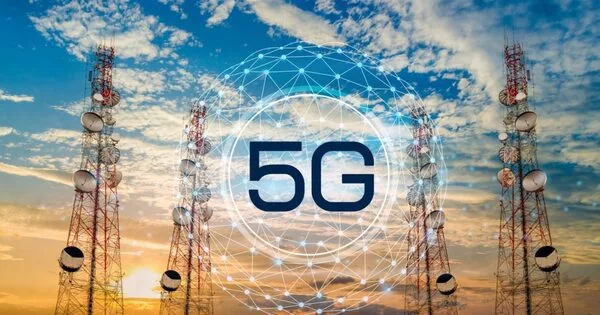5G is the fifth generation of wireless technology. Its enhanced speed, decreased latency, and improved dependability have the potential to transform a wide range of businesses. In telecoms, 5G is the fifth-generation technology standard for cellular networks, which cellular phone operators began installing globally in 2019. It is the successor to 4G technology, which connects most existing mobile phones.
5G networks, like their predecessors, are cellular networks with service areas separated into small geographical areas called cells. Radio waves connect all 5G wireless devices in a cell to the Internet and telephone network via a base station and antennae in the cell. When there is only one user on the network, the new networks have faster download rates, with a peak speed of 10 gigabits per second (Gbit/s).
Here are some key aspects of 5G technology:
- Speed and Capacity: 5G promises to give significantly faster broadband speeds than 4G. Peak download rates of up to 20 gigabits per second (Gbps) and upload speeds of up to 10 Gbps are expected. This is substantially quicker than the maximum speeds of 4G.
- Low Latency: One of the distinguishing characteristics of 5G is its low latency, which refers to the time it takes to send data. 5G networks strive for latency as low as one millisecond or less. This low latency is vital for applications requiring real-time responsiveness, such as augmented reality (AR), virtual reality (VR), driverless vehicles, and remote surgery.
- Increased Capacity: 5G networks are designed to support a substantially bigger number of connected devices at the same time. This is critical in order to support the expanding number of IoT (Internet of Things) devices, smart cities, and other applications that necessitate a vast number of linked sensors and devices.
- Spectrum Usage: 5G employs a broader variety of electromagnetic spectrum frequencies, including higher-frequency bands (millimeter waves) in addition to the typical lower-frequency bands. These higher-frequency bands provide faster speeds but have shorter transmission ranges and are more prone to interference from impediments such as buildings and trees. Lower-frequency bands offer greater coverage but at a slower rate.
- Network Slicing: 5G introduces the concept of network slicing, allowing network operators to create virtualized, customized “slices” of the network to cater to specific applications or industries. For example, a network slice can be tailored for autonomous vehicles with low latency and high reliability requirements, while another slice can be optimized for IoT devices with low power consumption needs.
- Massive MIMO (Multiple Input Multiple Output): 5G networks make extensive use of Massive MIMO technology, which involves multiple antennas at both the base station and the user device. This technology improves network efficiency, enhances signal quality, and helps overcome obstacles in the signal path.
- Beamforming: Beamforming is another key technology in 5G that allows the network to focus its signal directionally, rather than broadcasting in all directions. This helps improve signal strength and quality for individual devices, especially in crowded areas.
Applications
Healthcare, transportation, entertainment, manufacturing, and other industries are likely to be transformed by 5G technology. It will enable advances such as remote surgery, self-driving cars, immersive VR experiences, and mass adoption of IoT devices.
5G provides more capacity than 4G and can connect more devices, enhancing the quality of Internet services in congested locations. Because of the higher capacity, 5G networks are likely to be used as general internet service providers (ISPs), competing with existing ISPs such as cable internet, and will also enable new applications in the internet-of-things (IoT) and machine-to-machine fields. Cellphones with only 4G capabilities cannot access 5G networks.
















